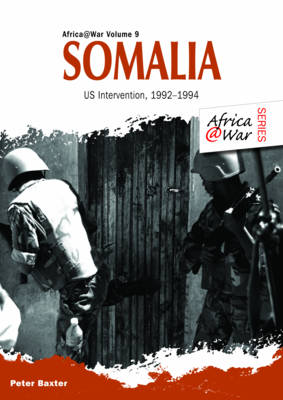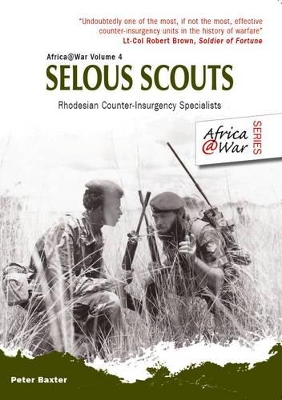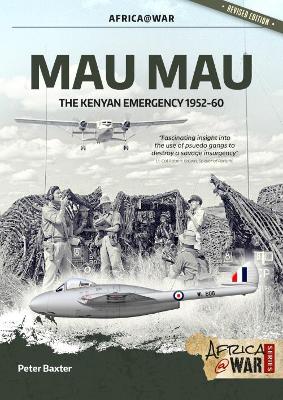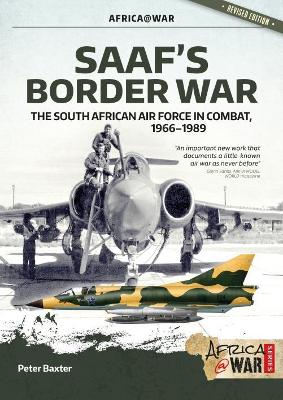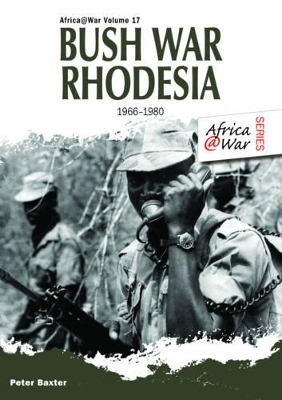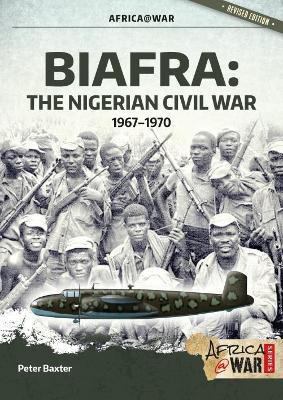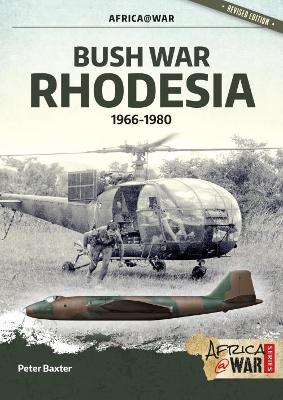Africa@War
8 total works
France in Centrafrique explores the pre- and post-colonial history of the Republic of Central Africa as well as giving the reader a taste of the country's involvement in World War II itself. The main focus of this volume is on Central Africa's independence and the rise to power of Jean Bedel Bokassa including the Focard network and Francafrique connections, France's military links with RCA (defense agreements), the republic's post independence military, its politics and Bokassa's coup. It takes a staggering look at Central Africa under Bokassa's leadership and the ensuing break down in its relationship with France.
Operation Baracuda was the natural culmination of that soured relationship and in this book Erwan de Cherisey examines"France's last colonial expedition", the planning of the operation, its players, a step-by-step breakdown and its outcome. To bring the reader up to speed with the RCA de Cherisey discusses the years after Bokassa, a new political rule, the effects on the army and the relationship with France all the way to Operation Almandin I, II and III. France's involvement in the RCA is deep-seated and ongoing.
This book concludes with a look at Operation Boali, Bozize's coup and the international fall-out in terms of further intervention both from France and the EUFOR.
About the Author
Peter Baxter is an author, amateur historian and African field, mountain and heritage travel guide. Born in Kenya, Peter has lived and travelled over much of southern and central Africa and has guided in all the major mountain ranges south of the equator. Peter lives in the United States, working on the marketing of African heritage travel as well as a variety of book projects. He is married with three children.
No more striking example of this can be found than Somalia. One of the only effective armed resistance movements mounted against European colonisation in Africa took place in Somalia, which was suppressed only after enormous military expenditure. The crisis in Somalia that began to take shape with the ouster of military leader Mohammed Siad Barre during the early years of the 1990s forced both the United States and the United Nations to adapt their collective military policy toward the challenges of peacekeeping, and peace enforcement, in a human environment only dimly understood, extremely austere in terms of local infrastructure and with a warring clan leadership.
This book tells the story of the international intervention that took place in Somalia, the successes, failures and lessons learned. Many broad assumptions were made based on an unclear understanding of the dynamics of a regional conflict, coupled with the necessity for the first time in modern military history to balance political necessities with military. The crisis in Somalia set the tone for military intervention in a post-Cold War world, and although the same mistakes have been depressingly often repeated, the complexion of global military organization changed dramatically as a consequence of this episode.
"Its members consisted of some of the finest guerrilla-fighting men in the western world, unconventional in many ways, disregardful of parade-ground discipline, unorthodox in their dress, yet a force so tightly knit in the face of danger that those who knew anything about them could only marvel"- The Citizen.
Formed in 1973 by the legendary Lieutenant-Colonel Ron Reid-Daly at the behest of Rhodesian military supremo General Peter Walls, the Selous Scouts were to write their name into the annals of military history as one of the finest counterinsurgency units of all time, through their innovative pseudo-guerrilla tactics, brilliant reconnaissance operations into Zambia and Botswana and daring flying-column raids into Mozambique. Feared and hated by the liberation movements ZIPRA and ZANLA, the Scouts wreaked untold havoc and destruction on their Soviet- and Chinese-backed enemies, accounting for 68% of guerrilla casualties within Rhodesia alone during the bitter bush war of the 1970s. Uniquely ahead of its time, the regiment, a brotherhood of men that traversed cultural and racial barriers with their Shona motto of"Pamwe Chete" (together only), was to produce the type of soldier that earned for the unit one Grand Cross of Valour, nine Silver Crosses and 22 Bronze Crosses of Rhodesia.
About the Author
Peter Baxter is an author, amateur historian and African field, mountain and heritage travel guide. Born in Kenya, Peter has lived and travelled over much of southern and central Africa and has guided in all the major mountain ranges south of the equator. Peter lives in the United States, working on the marketing of African heritage travel as well as a variety of book projects. He is married with three children.
In Kenya, however, matters were different. A vociferous local settler lobby had accrued significant economic and political authority under a local legislature, coupled with the fact that much familial pressure could be brought to bear in Whitehall by British settlers of wealth and influence, most of whom were utterly irreconciled to the notion of any kind of political handover. Mau Mau was less than a liberation movement, but much more than a mere civil disturbance. Its historic importance is based primarily on the fact that the Mau Mau campaign was one of the first violent confrontations in sub-Saharan Africa to take place over the question of the self-determination of the masses. It also epitomized the quandary suffered by the white settler communities of Africa who had been promised utopia in an earlier century, only to be confronted in a post-war world by the completely unexpected reality of black political aspiration.
This book journeys through the birth of British East Africa as a settled territory of the Empire, and the inevitable politics of confrontation that emerged from the unequal distribution of resources and power. It covers the emergence and growth of Mau Mau, and the strategies applied by the British to confront and nullify what was in reality a tactically inexpert, but nonetheless powerfully symbolic black expression of political violence. That Mau Mau set the tone for Kenyan independence somewhat blurred the clean line of victory and defeat. The revolt was suppressed and peace restored, but events in the colony were nevertheless swept along by the greater movement of Africa toward independences, resulting in the eventual establishment of majority rule in Kenya in 1964.
Set against the backdrop of the Cold War, the SAAF was effectively South Africa's first line of defence against Soviet expansionism in southern Africa. That the Soviets, through their surrogates - the Cuban military, Angola's FAPLA and Namibia's SWAPO - sought a communist regime in South Africa is indisputable, as too was the SAAF's skill, quality, determination and capability to defeat the best Soviet air defences of the time. This account covers all the major operations that the SAAF was involved in, from Operation Blouwildebees, the opening salvo of the conflict at Omgulumbashe, South West Africa in 1966 to the final curtain, Operation Merlyn, the so-called April Fool's Day 'war' of 1989 when the SAAF and Koevoet, almost alone, frustrated SWAPO's last throw of the dice with its illegal invasion of South West Africa.
In this account, highlighting such operations as Reindeer, Bootlace/Uric, Sceptic, Protea, Daisy, Askari, Moduler, Hooper and Packer, among many, as well as the ongoing methodological operations like Lunar, Maanskyn, Donkermaan and Butterfly, Baxter examines and brings to life the squadrons and aviators that fought in both counter-insurgency and conventional warfare roles.
Besides an extensive selection of rare photographs, the book features a comprehensive section on camouflage and markings and 11 pages of colour aircraft profiles and insignia by noted SAAF authority William Marshall, making this title especially useful for modelers.
A complicated historical process of occupation and colonization set the tone as early as the late 1890s for what would at some point be an inevitable struggle for domination of this small, landlocked nation set in the southern tropics of Africa. The story of the Rhodesian War, or the Zimbabwean Liberation Struggle, is not only an epic of superb military achievement, and revolutionary zeal and fervour, but is the tale of the incompatibility of the races in southern Africa, a clash of politics and ideals and, perhaps more importantly, the ongoing ramifications of the past upon the present, and the social and political scars that a war of such emotional underpinnings as the Rhodesian conflict has had on the modern psyche of Zimbabwe.
The Rhodesian War was fought with finely tuned intelligence-gathering and -analysis techniques combined with a fluid and mobile armed response. The practitioners of both have justifiably been celebrated in countless histories, memoirs and campaign analyses, but what has never been attempted has been a concise, balanced and explanatory overview of the war, the military mechanisms and the social and political foundations that defined the crisis. This book does all of that. The Rhodesian War is explained in digestible detail and in a manner that will allow enthusiasts of the elements of that struggle - the iconic exploits of the Rhodesian Light Infantry, the SAS, the Selous Scouts, the Rhodesian African Rifles, the Rhodesia Regiment, among other well-known fighting units - to embrace the wider picture in order to place the various episodes in context.
It did not. One of the signal failures of imperial strategists at the turn of the 19th century was to take little if any account of the traditional demographics of the territories and societies that were subdivided, and often joined together, into spheres of foreign influence, later evolving into colonies, and finally into nation states. Many of the signature crises in post-colonial Africa have owed their origins to this very phenomenon: incompatible and mutually antagonistic tribal and ethnic groupings forced to cohabit within the indivisible precincts of political geography. Congo, Rwanda/Burundi, Sudan and many others have suffered ongoing attrition within their borders as historic enmities surge and boil in restless and ongoing violence.
Such was the case with Nigeria in the post-independence period. The traditions and practices of the Islamic north and the Christian/Animist south, and even within the multiplicity of ethnic division in the south itself, proved to be impossible to reconcile. The result was an immediate centrifuge away from the centre, complicated by the vast infusion of oil revenues and the inevitable explosion of corruption that followed. All of this created the alchemy of civil war and genocide, which erupted into violence in 1967 as the eastern region of Nigeria attempted to secede. The war that followed shocked the conscience of the world, and revealed for the first time the true depth of incompatibility of the four partners in the Nigerian federation.
This book traces the early history of Nigeria from inception to civil war, and the complex events that defined the conflict in Biafra, revealing how and why this awful event played out, and the scars that it has since left on the psyche of the disunited federation that has continued to exist in the aftermath.
A complicated historical process of occupation and colonization set the tone as early as the late 1890s for what would at some point be an inevitable struggle for domination of this small, landlocked nation set in the southern tropics of Africa. The story of the Rhodesian War, or the Zimbabwean Liberation Struggle, is not only an epic of superb military achievement, and revolutionary zeal and fervour, but is the tale of the incompatibility of the races in southern Africa, a clash of politics and ideals and, perhaps more importantly, the ongoing ramifications of the past upon the present, and the social and political scars that a war of such emotional underpinnings as the Rhodesian conflict has had on the modern psyche of Zimbabwe.
The Rhodesian War was fought with finely tuned intelligence-gathering and -analysis techniques combined with a fluid and mobile armed response. The practitioners of both have justifiably been celebrated in countless histories, memoirs and campaign analyses, but what has never been attempted has been a concise, balanced and explanatory overview of the war, the military mechanisms and the social and political foundations that defined the crisis. This book does all of that. The Rhodesian War is explained in digestible detail and in a manner that will allow enthusiasts of the elements of that struggle - the iconic exploits of the Rhodesian Light Infantry, the SAS, the Selous Scouts, the Rhodesian African Rifles, the Rhodesia Regiment, among other well-known fighting units - to embrace the wider picture in order to place the various episodes in context.

